Pickling cabbage at home: when and how to transplant correctly
Well-grown seedlings will help you get a decent harvest of cabbage. Moreover, if you decide to grow cabbage seedlings with a pick, because, as a rule, most gardeners try not to use it. Therefore, it is important to immediately learn about all the intricacies of the process of picking cabbage seedlings at home.
It is to this (the choice of the optimal moment and the technique of performing the picking procedure) that this material will be devoted to.
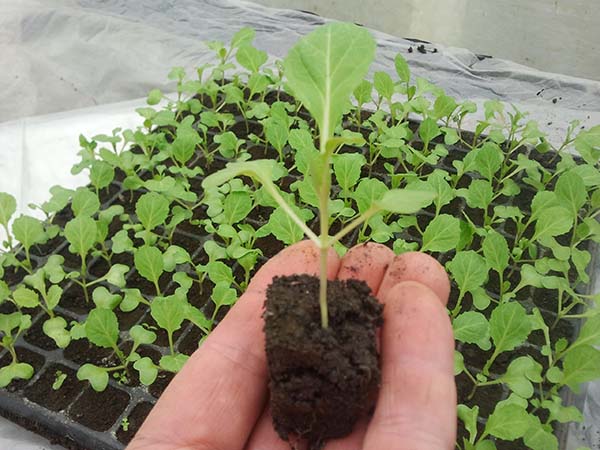
Content
Is it necessary to dive cabbage: in what cases is it necessary and is it possible to get by
As a rule, the picking procedure means planting plants from a common container into separate and more spacious containers.
However! The classic definition of a pick (dive) is removal of the end part of the taproot from a young seedling (in other words, shortening it by 1/3 or 1/4) in order to stimulate the branching of the root system (however, if it is a blessing for tomatoes, then for cabbage, the same eggplants and peppers - this is unacceptable!).
Let's immediately determine in which cases it is impossible to do without picking cabbage seedlings:
- You have over-thickened seedlings.
- The seedlings began to stretch.
In general, this is all a consequence of the fact that the plants have become cramped, they do not have enough food and light. A pick is required!
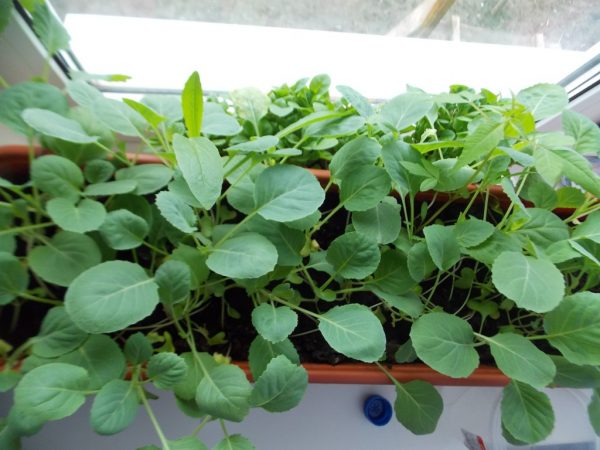
Is it possible to grow cabbage seedlings without picking
Yes, you can. And this is exactly what many gardeners do. And most of them immediately sow cabbage in the ground, in a greenhouse or a greenhouse, and then thin out or plant it, transplanting it into open ground (if it's cold, then under a film).
In order not to pick, you need to initially sow cabbage in individual (separate) containers with a volume of 200-300 ml. Moreover, it is desirable to sprout seeds.
Video: sowing different varieties of cabbage for seedlings with sprouted seeds for growing without picking
When to dive cabbage seedlings
As a rule, picking seedlings begin to be carried out when the plants form a pair (2 pieces each) of these leaves.
However, in the case of cabbage, this can be done much earlier: when the seedlings only the second real leaf will appear, or after cotyledon leaves are fully formed and the first true leaf will appear. Some gardeners dive at all in the phase of cotyledon leaves only (naturally well developed).

The need for such an early pick is explained by the fact that cabbage has a rather vulnerable root system that easily picks up various diseases, and in cramped conditions there is a very high probability of rapid spread of the infection.
Concerning approximate dates, then the moment for picking comes 7-14 days after sowing cabbage seeds for seedlings (for white cabbage - earlier, for color - a little later).
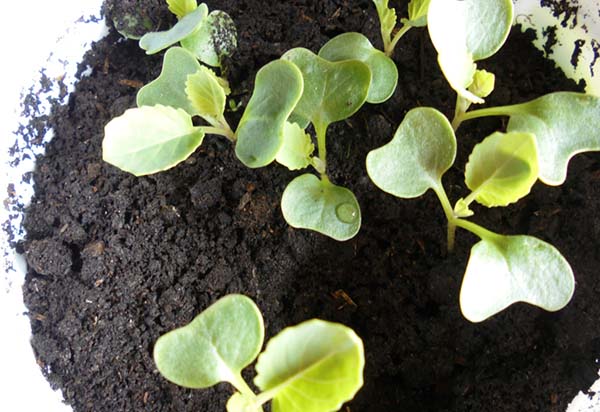
Of course, when determining the time of picking cabbage, it is necessary pay attention to the appearance of plants: if the plants still look weak, then you should not rush to the pick - they are definitely easily injured and are unlikely to take root after transplantation. On the other hand, it is also not worth delaying and postponing the picking to a later date, since the overgrown seedlings can hardly withstand a transplant (especially cabbage).
How to dive cabbage seedlings correctly: basic rules, recommendations and step-by-step instructions
You noticed that the seedlings of cabbage have formed and fully opened the cotyledon leaves, the first real leaf has already begun to appear, which means that the moment has come for a pick. But before proceeding to the direct dive, the procedure should be properly prepared, namely: prepare the soil, new containers and a couple of funds (preparations).
Soil preparation
For picking cabbage, exactly the same soil is suitable as for sowing seeds for seedlings, namely: it should be loose, light and certainly not acidic, have neutral acidity (in the range of 6.5-7 pH).
It is advisable to prepare the soil the day before the pick!
And of course, be sure to carry out the procedure disinfection.
Advice! Disinfect the soil you can useroasting or steaming in an oven or microwave, or spilling solutionFitosporin (according to instructions)... Better yet, do both (first ignite, then cool, and then spill).
The easiest way is to use a ready-made special soil for growing cabbage seedlings.
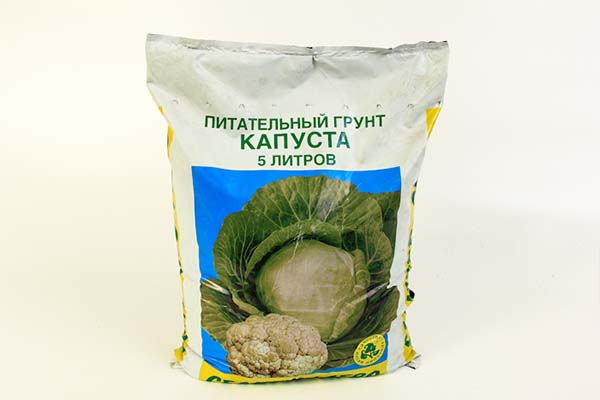
Of course, you can always prepare the soil mixture yourself. Here are some proven recipes:
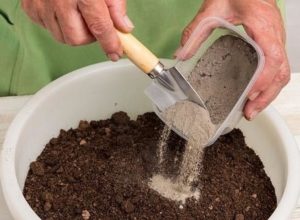
- sod land, high peat, humus or compost, sphagnum moss or river coarse-grained sand in a ratio of 1: 1: 2: 1;
- peat, compost, rotted sawdust or sand in a ratio of 3: 5: 1;
- turf soil, humus or compost, sand in a ratio of 2: 3: 1;
- turf land, leaf land, humus or compost in equal proportions (1: 1: 1);
Important! Do not forget to all potting mixes add one of deoxidizerse.g. lime, chalk, dolomite flour or wood ash (for example, 1 glass or 100 grams of ash per 10 liters of soil = 10 grams of ash per 1 liter of soil mixture). This will be a fertilizer (for example, ash - potassium-phosphorus), and will reduce the acidity of the soil.
Worth knowing! As a rule, mostcabbage diseases occur due to excessive acidity of the soil, is the same keel.
Dive container
When picking cabbage seedlings into separate containers, their volume should be about 0.2-0.3 liters, maximum - 0.5 liters. Both plastic cups and cassettes will do.
Important! A container for picking must have drain holes, or you need lay out the drainage layer from expanded clay or pebbles (1-2 cm). And you can do both (but not necessarily).
Recently, the use of such homemade containers made of polyethylene or other similar material has become especially popular.
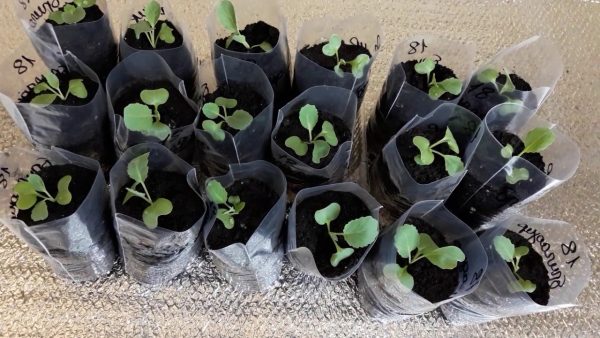
Direct pick
If you have a sufficient number of seedlings, then do not dive weak and painful seedlings, it is better to get rid of them, so to speak, to select (reject) low-quality specimens.
Step-by-step instructions for picking cabbage seedlings into separate containers:
Advice! Optional, a couple of hours before the pick (or 6 hours after), to neutralize stress, seedlings can be sprayed with one of the growth stimulants, for example, "Epin" or "Zircon" (according to the instructions).
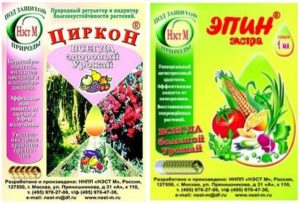
- A few hours before the dive, young seedlings should first be slightly spilled with warm water, so that the soil does not crumble from the roots when they are dived, and the earthen lump is well separated (during transshipment).
Alternative opinion! In order for the seedlings to remain elastic and not break during the pick, on the contrary, it is advisable to slightly dry the soil before the procedure.
- Fill individual containers with soil (but not completely, by about 2/3, so that you can water the plant normally and add soil as it grows).
- Make small depressions in the middle of the containers (holes, more precisely, cone-shaped pits).
- Carefully remove the plants from the container.
If you dive seedlings from a common container, then it is quite difficult to keep an earthen lump, but it is still worth trying so that at least a small layer of earth remains on the roots. Therefore, slowly, using a spoon or stick, gently pry the roots from below (digging from all sides) and carefully remove the plant from the soil.
But if you transplant (more precisely, transfer) from cassettes or small individual containers, then this must be done together with an earthen lump (it's quite simple).
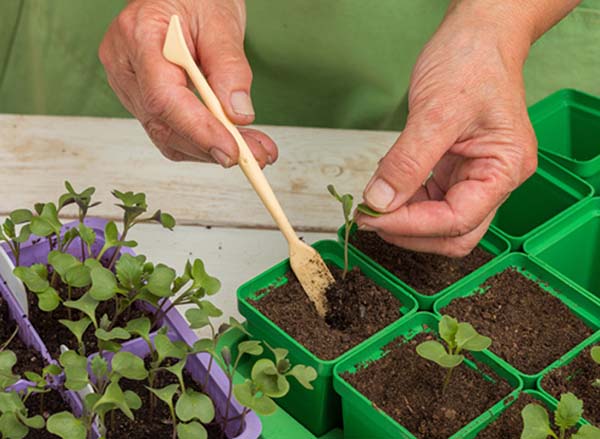
- Optionally, in order to enrich the root system with beneficial bacteria, you can dip the roots in the drug solution"Fitosporin" (against fungal diseases) or drug"Cornesil" (for better development of the root system).Prepare solutions only according to the instructions on the packaging.
By the way! There is a specialFitosporin "Cabbage"containing in its composition specially selected phytobacteria to protect cabbage, as well as trace elements for better seedling growth (boron, copper, manganese).
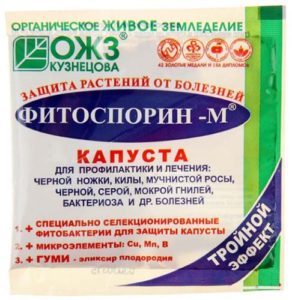
- Place the seedling in the hole, deepening almost to the cotyledonous leaves.
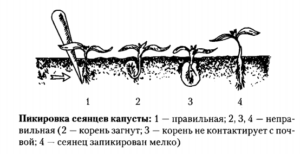
- Then you spill it with warm water so that the roots of the plant come into good contact with the soil.
If desired, you can spill the remaining nutrient solution"Fitosporin"or "Cornesila".
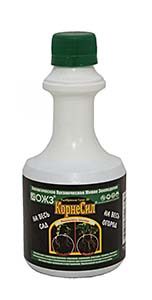
- And so that after watering a dry crust does not form on the soil surface, you can slightly add soil on top.
Advice! At will, to surely protect the seedlings from disease black leg, you can additionally sprinkle on top with vermiculite or coarse sand.
- The cut seedlings for 1-2 days should be placed in a relatively warmer place (+18 ..- 22 degrees, according to other sources, even up to +25 degrees), and then they can be returned to standard conditions. This will allow the seedlings to more easily get used to (more precisely, oklematsya) after the pick and take root in new conditions.
By the way! For prevention black leg and other fungal diseases, you can put a Glyocladin tablet in each container (if you do not use phytosporin).
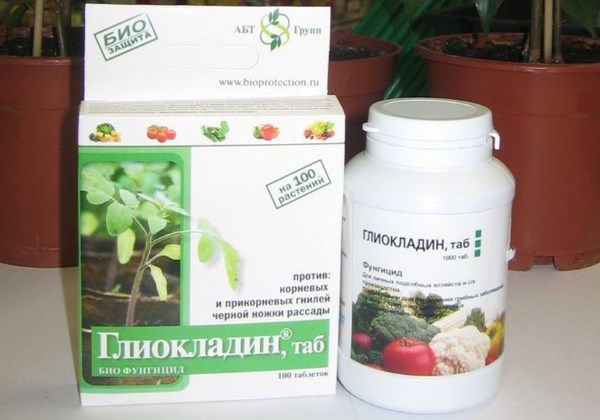
Video: picking cabbage seedlings at home
The following videos talk about picking cabbage in a greenhouse.
Video: how to dive cabbage (cauliflower)
For the features (which are almost absent) of broccoli picking, see the following video:
Video: picking broccoli cabbage
Caring for cabbage seedlings after picking
Then you continue to care for cabbage seedlings in a similar way: you maintain the temperature and light conditions, water it in a timely manner (as the top layer of the earth dries up), feed it (if necessary).
The first 7-14 days after the pick, as a rule, are spent on adapting the seedlings after the pick. It is at this moment that the first feeding should be carried out.
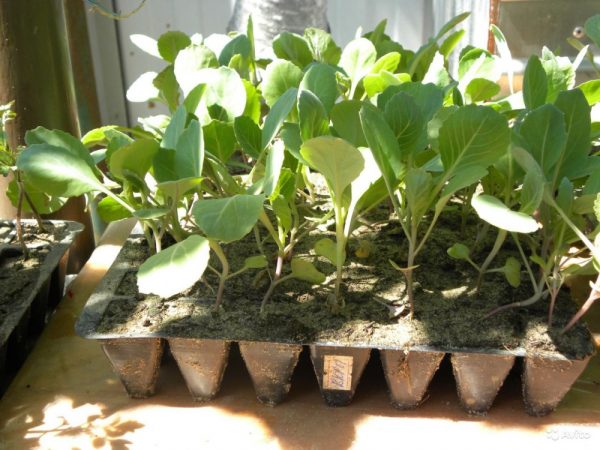
By the way! About, how to properly care for cabbage seedlings, described in detail in this general article on growing it.
Thus, now you know exactly how to dive cabbage seedlings correctly. Indeed, there is nothing complicated about it. You just need to follow the basic rules and recommendations.
Of course, cabbage seedlings are better than growing without picking, or sowing seeds directly into open ground (greenhouse), but even with picking, you can add excellent results if you do everything right.
Video: how to dive cabbage

